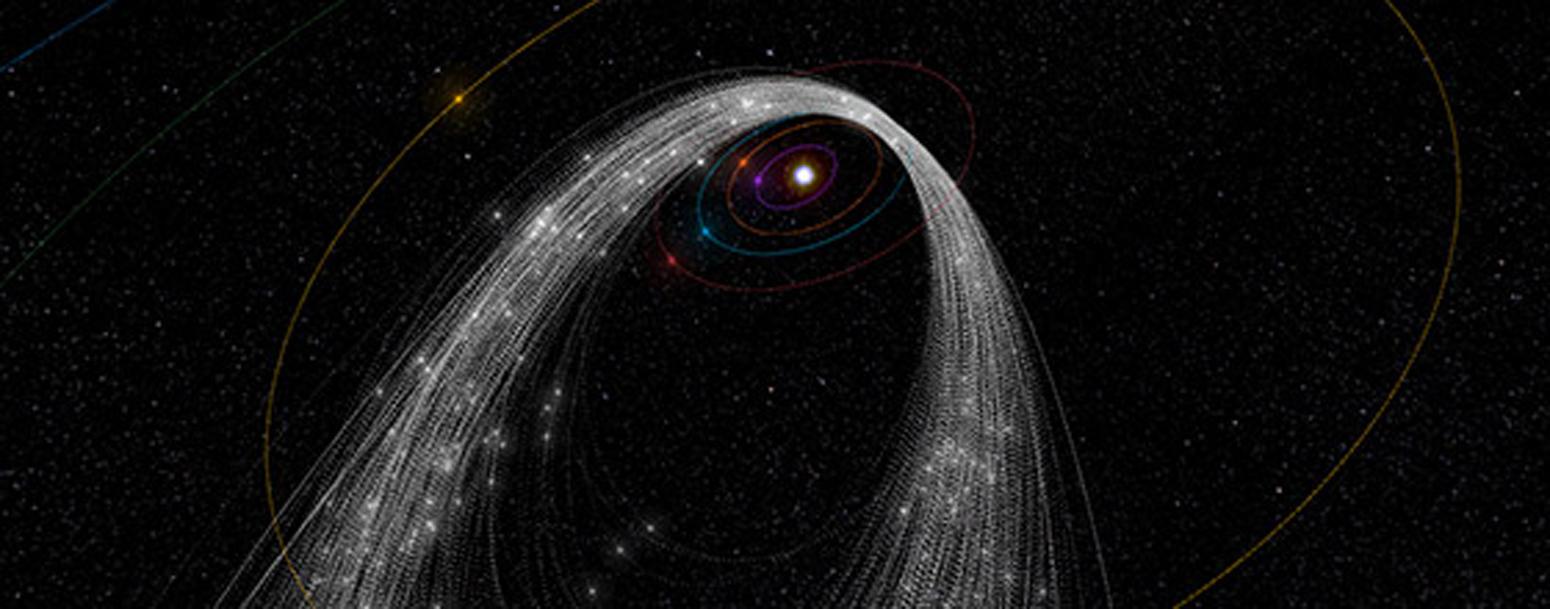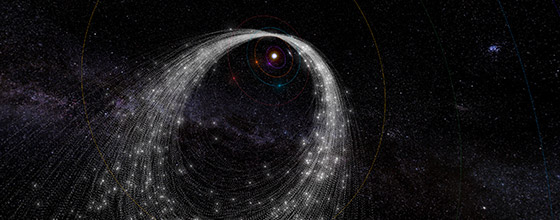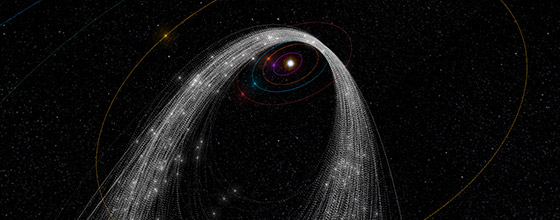New studies show that meteor showers wander over time.

Some meteor showers persist for weeks and months, even though Earth sweeps a big arc around the Sun during that time. The meteors arrive from a slightly different direction each day, which is a clue to why these showers last so long. In a review of ongoing meteor surveillance projects worldwide, 45 showers are identified that take this motion to extremes, visualized in spectacular animation.
"I was most surprised by some showers that were initially seen close to the plane of the planets, but then moved up towards the pole over the course of weeks," says meteor astronomer Dr. Peter Jenniskens of the SETI Institute and NASA Ames Research Center.
Jenniskens runs the NASA sponsored project Cameras for Allsky Meteor Surveillance (CAMS)in Northern California, which aims to confirm some of the 300+ meteor showers on the International Astronomical Union (IAU) Working List that still need verification. 60 low-light video cameras film the skies over the San Francisco Bay Area and have recorded more than 300,000 meteoroid trajectories since beginning observations in 2010.
The observations show that meteor showers do not stay in one place. For example, the well-known Perseids get their name from the constellation of Perseus from which they radiate at their peak in mid-August. But the camera networks first detect the shower on July 1 in Cassiopeia. And the Perseids are tracked until September 3, when the meteors radiate from the neighboring constellation Camelopardalis.
“The small daily drift of the Perseids is mostly due to Earth's motion around the Sun," said Jenniskens. "But after taking that into account, 18 short-period and 27 long-period showers are still seen to wander from night to night."


Top: The warped kappa Cygnids meteor shower peaks in mid August
Bottom: The warped omicron Eridanids peaks in mid November
The most dramatic motion is displayed by short period showers such as the kappa Cygnids and omicron Eridanids that have the massive planet Jupiter near their furthest point from the Sun. Jenniskens displayed the measured orbits in a new animation and noticed how these streams as a whole were warped.
"Jupiter's gravity is likely responsible for warping these meteoroid streams by causing both the orientation of the orbital plane and the distance of closest approach to the Sun to change," said Jenniskens. "The combination of the two creates conditions suitable for hitting Earth over weeks or months."
Jenniskens review paper has been accepted for publication in the journal Planetary Space Science.
Article: http://cams.seti.org/PSSreviewMeteoroids2016.pdf
Animation by Ian Webster and Peter Jenniskens showing two of the warped streams in space (use cursor to change perspective):
http://www.ianww.com/meteor-showers/#Omicron-Eridanids
http://www.ianww.com/meteor-showers/#Kappa-Cygnids





